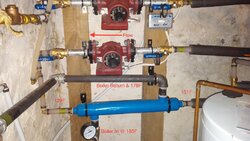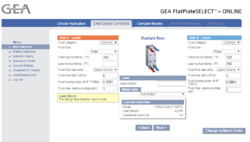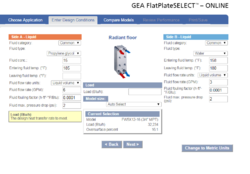Hello again all,
Biomass 40 is running top notch now, thanks to tips and tricks of everyone here. It's cycling nice, clean, and I coulnd't be happier.
My next problem is a whole other can of worms (and has lead me down the rabbit hole already trying to diagnose).
My Heating/Cooling guy and I are trying to figure out why I've got low output temps on my tube shell exchanger. Pic follows with current readings after about 48 hours of continuous burn. Bottom line is, I can't crack around 150F. I have 3 water heaters used as storage/buffer, so only about 150 gallons. I have a 16x20 air/water HX in the furnace and a solitary 5 foot slat-fin rad in the upstairs bedroom. 3 speed pumps for each (storage, furnace, rad). Have experimented with all speeds, found that has little impact.
Now all this to say, at around 10F outside, I can keep the 1800 sqft farm house at around 68F, but based on the output numbers, I know there's something amiss. There's got to be more heat there.
Last piece of the puzzle is the tube shell - it's 85,000 but/h. Is it possibly undersized?
Needless to say, I'm happy that the 80,000 btu propane furnace has been silent for over 30 days.
Biomass 40 is running top notch now, thanks to tips and tricks of everyone here. It's cycling nice, clean, and I coulnd't be happier.
My next problem is a whole other can of worms (and has lead me down the rabbit hole already trying to diagnose).
My Heating/Cooling guy and I are trying to figure out why I've got low output temps on my tube shell exchanger. Pic follows with current readings after about 48 hours of continuous burn. Bottom line is, I can't crack around 150F. I have 3 water heaters used as storage/buffer, so only about 150 gallons. I have a 16x20 air/water HX in the furnace and a solitary 5 foot slat-fin rad in the upstairs bedroom. 3 speed pumps for each (storage, furnace, rad). Have experimented with all speeds, found that has little impact.
Now all this to say, at around 10F outside, I can keep the 1800 sqft farm house at around 68F, but based on the output numbers, I know there's something amiss. There's got to be more heat there.
Last piece of the puzzle is the tube shell - it's 85,000 but/h. Is it possibly undersized?
Needless to say, I'm happy that the 80,000 btu propane furnace has been silent for over 30 days.



 I think the confusion lies in our choice of a tube/shell exchanger. Our heating/cooling guy happened to have one, yadda yadda yadda, it was a freebie.
I think the confusion lies in our choice of a tube/shell exchanger. Our heating/cooling guy happened to have one, yadda yadda yadda, it was a freebie.

 . Thank you for this, picture is worth a thousand and could save a few hundred
. Thank you for this, picture is worth a thousand and could save a few hundred  The above would allow me to keep my existing setup and simply swap out the tube/shell if I understand correctly?
The above would allow me to keep my existing setup and simply swap out the tube/shell if I understand correctly?